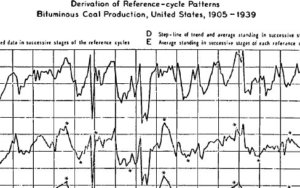First, because the history of the classification used by the American Economic Association is a relevant proxy to understand the transformation of economic science throughout the 20th century. Classifying literature and scholars involves naming, listing, and ordering, and it had been accompanied by heated and explicit discussions on the status of theoretical and empirical work or on the dynamics, content and independence of applied fields: is there any theory that is not in some sense applied? What type of work does Macroeconomics cover? Is it a set of subject matters or a method? Should Urban Economics become an independent field? Should data gathering and policy discussions be classified separately? Classification debates highlights the variety of visions economists had of their discipline at a given time, and how economists’ identity has evolved throughout the century.
The resulting codes were however not a pure representation of the intellectual structure of economic science. They also reflected the contradictory demands of users: librarians needed help in indexing papers and books; editors needed a way to select reviewers and referees; recruitment committees needed a way to classify the articles that were increasingly used to assess job candidates; the NSF needed a classification to use in evaluating scientific expertise; and the government needed a system to draft economists into the war effort, then to fill the growing demands of its departments, bureaus and agencies. Classification was also constrained by the evolution of technology, from punchcards to mechanical devices, computer and the internet, and the transformation of the size and role of scholarly publication.
To me, this project has been an attempt to track and document the dual process of unification around a core and fragmentation in dozens of applied fields the discipline seemingly underwent since 1970. Understanding whether “becoming applied” had been the key transformation of economics in the last 40 years is now a collective research project. But I suspect the JEL code story could be used as a teaching tool as well, a way to introduce students to the changing scope and nature of economics.
The significance of scientific classification is especially important to recognize at a moment the AEA is considering a new revision of its classification. After a period of frequent revisions – 1948, 1956, 1967 and 1990 — the classification had remained stable over the past 25 years. A few category headings were altered, and several subclasses were created within the existing scheme as new keywords were increasingly used by authors in EconLit. The opening of a new revision round would signal more fundamental changes in the structure of the discipline, and classification debates is where these changes will be identified and assessed.
In trying to pin down what changes created the need for a new revision, my initial guess was that there could a kind of hyperfragmentation. In the current scheme, there is only space for 7 more independent categories. What if many more fields should now be treated on a par with international, financial, labor, or public economics? But one of my colleagues pointed to me that fields rather seemed to loose coherence as fields, so that there is only a wide and amorphous “applied micro” category left.






